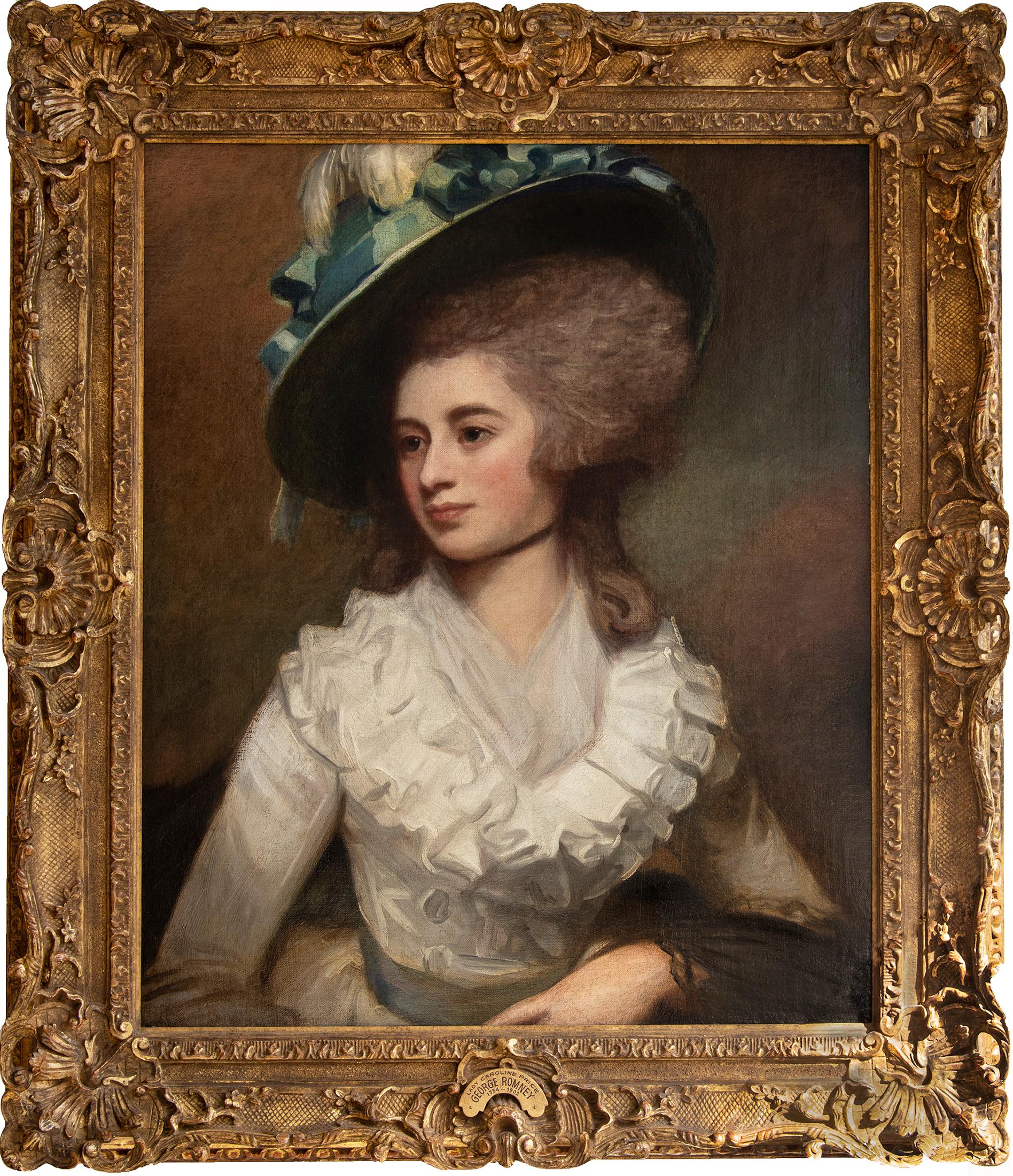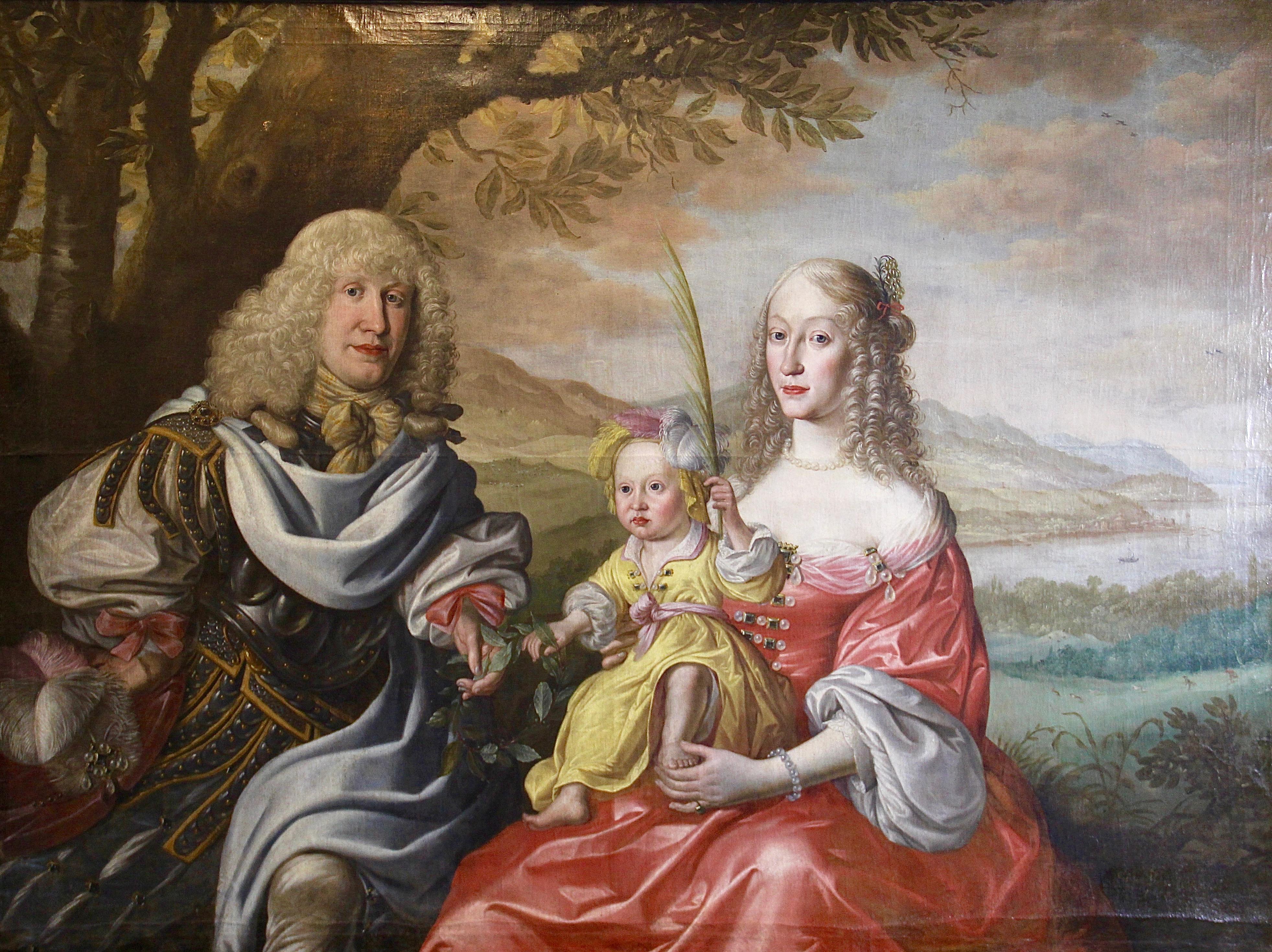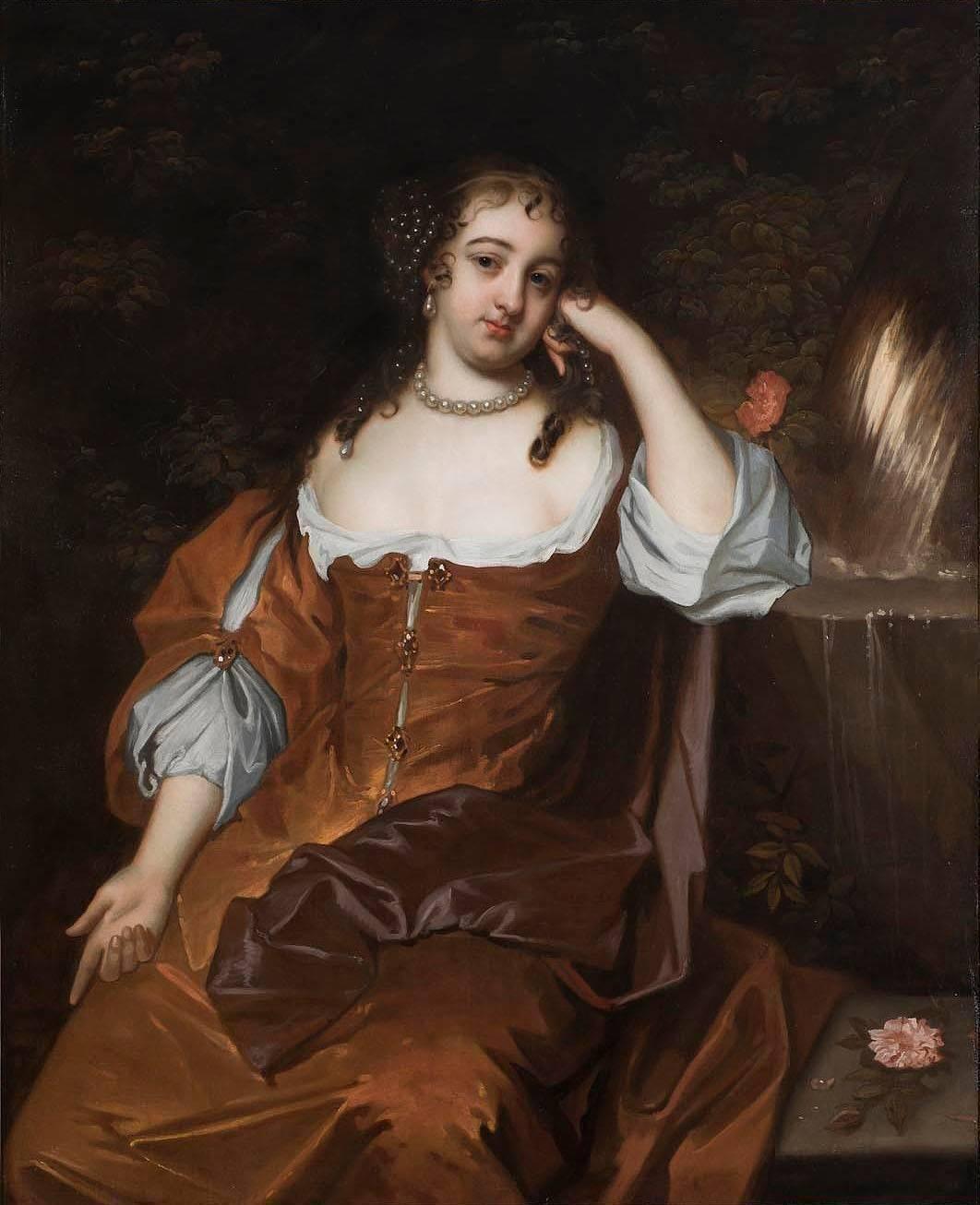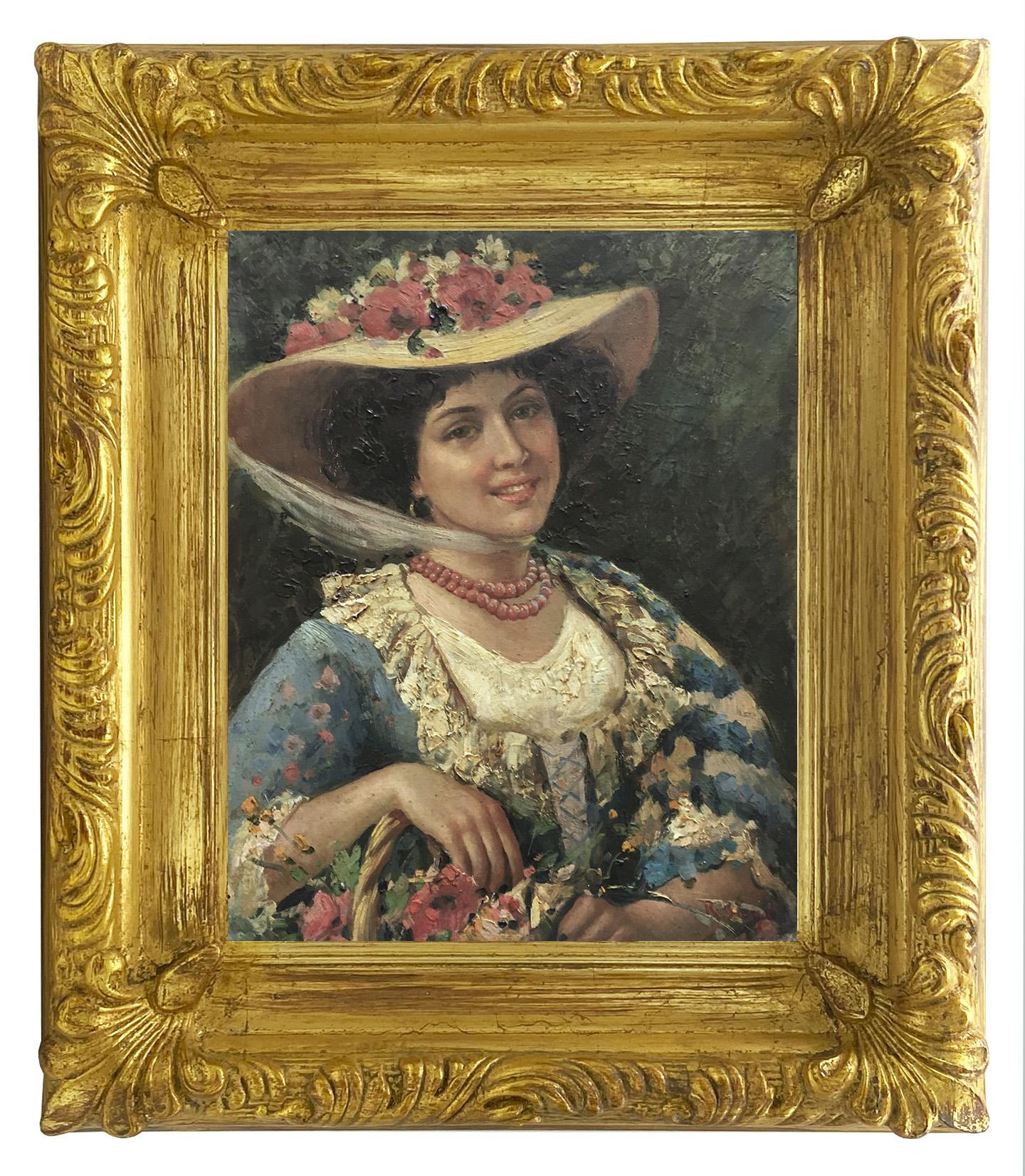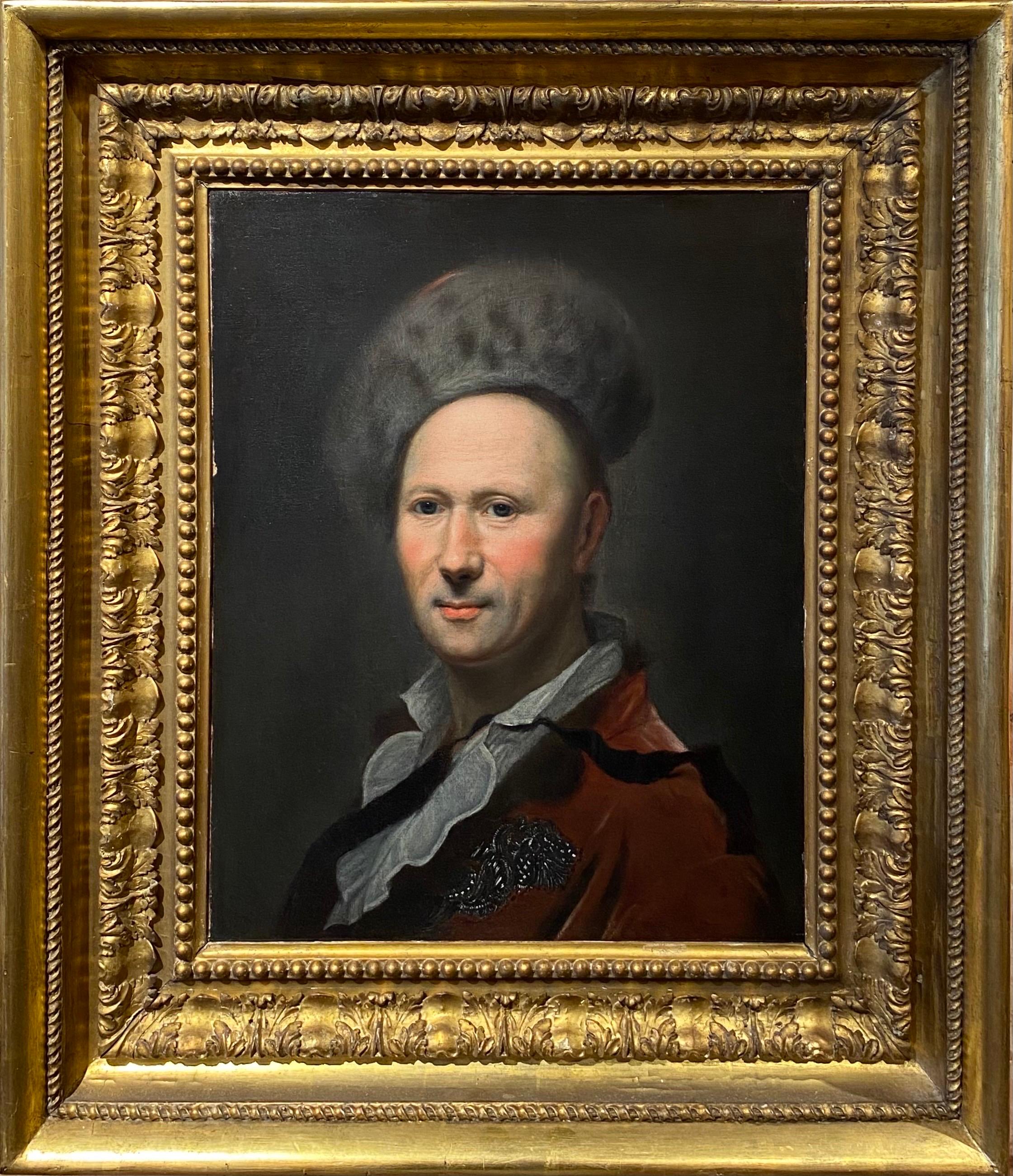Items Similar to Portrait of Louis de France, Grand Dauphin, 17th century French School c. 1670
Want more images or videos?
Request additional images or videos from the seller
1 of 14
Portrait of Louis de France, Grand Dauphin, 17th century French School c. 1670circa 1670
circa 1670
About the Item
Portrait of Louis de France (1661 -1711), known as the Grand Dauphin, son of Louis XIV and Maria Theresa of Austria.
17th century French School, circa 1670
Workshop of Beaubrun Henri (1603-1677) and Charles (1604-1692)
Oil on canvas, h. 79 cm (31.10 in), l. 70 cm (27.56 in)
Louis XIV style giltwood and stucco frame
Framed: h. 107 cm (42.13 in), l. 99 cm (38.98 in).
Rare ceremonial portrait of Louis de France, aged around 10, wearing rich miniature clothes following the men's fashion of his time.
He is standing, turned in three quarters, his gaze with a solemn expression contrasts with his baby face with full cheeks which appears in the middle of thick blond curls falling on his shoulders. He wears a tobacco-colored cloth jacket which hides a shirt of which we only see the silver-embroidered sleeves. He wears the blue cord of the order of the Holy Spirit slung over his shoulder, and over it a ribbon embroidered with gold and silver. The white lace tie at her neck is enhanced by a coral ribbon bow. The same ribbon trimmings decorate his sleeves, his cane, and his sword holder. Her hands are wrapped in long white gloves, and the wrists are decorated with bows of ribbon.
His sword, the hilt of which can be seen among the ribbons, is attached to a centurion. Curious that this might appear on such a young child, the sword and the cane were only fashion objects under Louis XIV, rather than a military badge.
His figure stands out against the background of a large crimson velvet curtain whose cleverly constructed folds are raised to expose the distant horizon.
The first son of Louis XIV, he's obtained the title of Monseigneur or the Grand Dauphin at his birth, he has always been in the centre of particular attention being the sole successor to the French Crown.
From its birth, a clever communication campaign was put in place to promote the dynastic sustainability of the Bourbons. The distribution of portraits of the heir of Louis XIV helped consolidate the monarchy.
In some portraits he is represented alone, in others he is with his mother Maria Theresa of Austria (see the full-length portrait kept in the Prado Museum in Madrid, painted by Pierre Mignard around 1664, inv. P02291) or with his grandmother Anne of Austria (see the one kept at the Palace of Versailles and painted by Beaubrun around 1665 (inv. MV 9157)).
Most of his portraits were executed by painters working for the French court, the Beaubruns, Jean Nocret or Pierre Mignard.
Our portrait is a workshop variant of Charles and Henri Beaubrun, the original painting (lost or destroyed) is known from two engravings by Nicolas de Larmessin and would have been painted by the Beaubruns around 1671.
However, there remains a second portrait very similar to ours kept in the Padua museum in Italy, the clothes are identical, yet the hairstyle of loose curls and the less chubby face could indicate a slightly older age.
Related works:
- Portrait of Louis de France, Padua, Museum of Fine Arts, Italy, circa 1670?
- Louis de France, Engraving by Nicolas de Larmessin after Beaubrun, circa 1671, Palace of Versailles, inv. GRAV 4087
- Louis de France, Engraving of Nicolas de Larmessin as a bust, after Beaubrun, Palace of Versailles, circa 1671, inv. LP44-3(2)
- Louis de France, c. 1663, Beaubrun Charles and Henri, Prado Museum, Madrid, oil on canvas 129 x 98 cm, inv P002232
- Louis de France, , around 6 years old, oil on canvas, attributed to Jean Nocret, around 1668, 175 x 128 cm, Prado Museum (Madrid) deposited at the Royal Palace.
Louis de France, known as Monseigneur, or the Grand Dauphin after his death, was born in Fontainebleau on November 1, 1661 and died at the Château de Meudon on April 14, 1711.
The eldest son of Louis XIV and Marie-Thérèse of Austria, destined to succeed his father, Monsignor the Dauphin benefited from a specific education and training that Louis XIV wished to be the most successful.
Monsignor took part in several military campaigns between 1688 and 1694, including the glorious capture of Philippsburg in 1688.
He died at the age of 49 without ever having reigned.
Charles Beaubrun (1604-1692), Henri Beaubrun (1603-1677)
Charles and Henri Beaubrun, inseparable in their lives, are also in the history of French painting. Charles's father, Mathieu de Beaubrun, page of Cardinal de Joyeuse, was sent to Rome to complete his education as an artist, the talent he passed on to his son. As for Henri, his father, also named Henri, was valet to the king's wardrobe, which earned the son a position as harquebus holder, Louis XIII, recognizing young Henri's passion for painting, took an interest in his education. Henri, gaining popularity as a court painter, associated his cousin Charles with new commissions from courtiers, and so they began to work together on the same works, so that it is difficult to distinguish the hand of each painter. The cousins ??then collaborated between 1630 and 1675, painted many official portraits and specialized in royal portraits, being appointed official painters of the Court during the reigns of Louis XIII and Louis XIV. In the middle of the century, they enjoyed great success with the ladies of the court and produced several series of female portraits of the great nobility.
In 1648, they participated in the foundation of the Royal Academy of Painting and Sculpture.
- Attributed to:Beaubrun Henri (1603-1677) and Charles (1604-1692) (1603 - 1692, French)
- Creation Year:circa 1670
- Dimensions:Height: 42.13 in (107.02 cm)Width: 39.98 in (101.55 cm)
- Medium:
- Movement & Style:
- Period:1670-1679
- Condition:Very good original condition, cleaned and revarnished by our professionnal art restorer.
- Gallery Location:PARIS, FR
- Reference Number:1stDibs: LU2433214457502
About the Seller
No Reviews Yet
Vetted Seller
These experienced sellers undergo a comprehensive evaluation by our team of in-house experts.
1stDibs seller since 2023
Typical response time: 1 hour
- ShippingRetrieving quote...Ships From: PARIS, France
- Return PolicyA return for this item may be initiated within 3 days of delivery.
More From This SellerView All
- 18th c. French Portrait of Louise Dorothea von Hoffman, signed H. Millot, 1724Located in PARIS, FRHENRI MILLOT PORTRAIT OF LOUISE-DOROTHÉE VON HOFFMAN Signed “h. millot” and dated 1724 on the back of the original canvas Henri Millot, French painter (Paris, active between 1699 an...Category
Early 18th Century Old Masters Portrait Paintings
MaterialsCanvas, Oil
- 18th c. French, circa 1725, by François de Troy, portrait of a Lady as CeresLocated in PARIS, FR18th century French School François de Troy (1645 – 1730), Paris, circa 1725 Portrait of a Woman as the Goddess Ceres Oil on canvas: h. 39 in, w. 31.3 in Regen...Category
Early 18th Century Old Masters Portrait Paintings
MaterialsCanvas, Oil
- 17th French Portrait of Louis XIV & his brother, c. 1645, attributed to BeaubrunLocated in PARIS, FRRare double portrait depicting Louis XIV and his brother Philippe de France as children. 17th century French School, circa 1645, attributed to Charles and Henri Beaubrun. Oil on canvas, dimensions: h. 48.03, w. 35.43 in. Important 17th century carved and giltwood frame Framed dimensions: h. 60.23, w. 48.42 in. This rare portrait is part of a series of works illustrating the childhood of the two princes, mainly commissioned by Anne of Austria, the mother and regent, after the death of Louis XIII. Expressing her fierce desire to preserve her son's crown, she uses visual communication as a channel of sovereign expression. The portraits serve to strengthen the royal power weakened by the minority of the young Louis...Category
Mid-17th Century Old Masters Portrait Paintings
MaterialsCanvas, Oil
- 18th c. French Portrait of Princess of Bourbon as Hebe, Pierre Gobert, c. 1730By Pierre GobertLocated in PARIS, FRPortrait of Princess of Bourbon as Hebe Pierre Gobert, circa 1730 Presumed portrait of Elisabeth Thérèse Alexandrine of Bourbon-Condé, Mademoiselle de Sens, depicted as the goddess Hebe kidnapped by Zeus, transformed into an eagle. 18th century French School, around 1730 Pierre Gobert (1662-1744) and workshop Oil on canvas Dimensions: canvas: h. 129 cm, w. 95cm Dimensions: framed: h. 156 cm, w. 124cm Louis XIV style giltwood and cardved wood frame Large and imposing portrait of the young princess portrayed seated on an eagle in the heavens. Seen from the front, the princess is dressed in a low-cut white chiffon dress, exposing her throat. Delicately made-up oval face, dominated by large blue-gray eyes is surrounded by powdered hair, raised, releasing the forehead and the ears, and of which some locks fall on his shoulder. A large blue scarf passed over the shoulder covers her knees and flies in the wind. A garland of flowers coming from the back goes over the knees and down again on the eagle. In her right hand she holds a golden goblet and in her left hand an ewer. The eagle supporting the young woman seizes in its claws the thunderbolt (the beam of fiery lightning), the attribute of Zeus. The figure of the young woman is enlivened by the fluidity of the antique drapes...Category
Early 18th Century Old Masters Portrait Paintings
MaterialsCanvas, Oil
- French, circa 1730 Portrait of King Louis XV in armour, workshop of J.B. Van LooLocated in PARIS, FRPortrait of French King Louis XV (1710-1774) in armour 18th century French school Workshop of Jean Baptiste Van Loo (1684-1745) Circa 1730 Oil on canvas, dimen...Category
Early 18th Century Old Masters Portrait Paintings
MaterialsCanvas, Oil
- 18th c. French Portrait of a Lady by Jean Ranc (1674 - 1735), Paris circa 1700Located in PARIS, FRPortrait of a Lady with carnations By Jean Ranc (Montpellier 1674 - Madrid 1735), circa 1700 Oil on canvas in oval shape, Dimensions: h. 35.82, w. 28.34 in. Period Louis XIV giltwood and carved frame with laurel leaves. Framed dimensions: h. 42.52 in, w. 33.85 in. Provenance: Collection of the Marquis de Bailleul at the Château d'Angerville-Bailleul (before 1942). To be included in the catalog raisonné of the artist by Stephane Perreau Important portrait of a young woman depicted half-length turned three-quarters, her face looking at the viewer. Dressed in a brick red velvet dress, an elegant blue scarf envelops her figure. Hair styled “a la Fontange”, her powdered hair is raised and tied at the back with a red ribbon, several curly locks escape from her bun and fall on her back and shoulders. The perfectly oval face with regular features dominated by her straight nose is softened by her gray eyes with slightly lowered lids. The red tinged skin tones on the cheeks and cheekbones color the face and make the portrait come alive. The young woman is portrayed standing near a pot of carnations. Her strongly lighted figure stands out against an architectural background of columns. The artist's palette is made of contrasts opposing warm to cold hues. The icy electric blue contrasts with the fiery brick red, the hair powdered with white accentuates even more the flush of the cheeks. The left arm bent at the elbow, extending the open hand with slightly bent fingers in the foreground brings depth to the composition. Our portrait, an interesting testimony in the corpus of works of the painter, is part of his youthful period, around 1700-1705. The former belonging of this portrait to the Marquis de Bailleul reinforces the remarkable character of our painting. The portrait has been examined by Stéphane Perreau, specialist of Jean Ranc and will be included in the catalog raisonné currently being written, under number P. 43. The notice edited by Mr Perreau is below: "Painted around 1700-1705, this portrait of a woman is directly inherited from Hyacinthe Rigaud, the master of Jean Ranc (the hand turned over the front, in a watch...Category
Early 18th Century Old Masters Portrait Paintings
MaterialsCanvas, Oil
You May Also Like
- Portrait of Lady Caroline PriceBy George RomneyLocated in Miami, FLDESCRIPTION: Perhaps the best Romney in private hands. If Vogue Magazine existed in the late 18th century, this image of Lady Caroline Price would be ...Category
1970s Old Masters Portrait Paintings
MaterialsCanvas, Oil
- SIMON PETER TILEMANN, Family Portrait, 1658, Old Master. Baroque Rococo PaintingBy Simon Peter TilemannLocated in Berlin, DEExtremely decorative and large oil painting from the 17th century. Restored in places. Signed and dated Simon Peter Tileman 1658 fecit 'lower right Dimensions without frame. From Wikipedia, the free encyclopedia: Simon Peter Tilemann (1601, Lemgo – 1668, Vienna), was a German Baroque painter who was active Bremen, Kassel and Italy. According to Houbraken he first learned to paint flowers and he had a daughter who could paint flowers in watercolors. He was a good landscape painter who spent many years in Italy, but later switched to portrait painting and who painted the portrait of Ferdinand...Category
1650s Old Masters Portrait Paintings
MaterialsCanvas, Oil
- Portrait of a Lady, 17th Century Flemish Oil Old MastersBy Jacob HuysmansLocated in London, GBJacob Huysmans Flemish 1633 - 1696 Portrait of a Lady Oil on canvas Image size: 49 x 40 ¼ inches Gilt frame Huysmans was born in Antwerp and came to England during the reign of Charles II where he became one of the fashionable painters of the court.. The diarist Samual Pepys noted the artist as capable of a more exact likeness than Lely. Certainly the diarist records that by August 1664 in the circle of Queen Catherine...Category
17th Century Old Masters Portrait Paintings
MaterialsCanvas, Oil, Acrylic
- SPRING PORTRAIT- French School Impressionist - Italian Oil on Canvas PaintingBy Jean Philipe MorenoLocated in Napoli, ITSPRING PORTRAIT - Oil on canvas cm.30x24 by Jean Philipe Moreno, Italy 2002. Frame available on request from our workshop. Moreno’s portrait depicts a young Parisian woman, her face ...Category
2010s Old Masters Portrait Paintings
MaterialsCanvas, Oil
- Portrait of Conrad Friedrich Hurlebusch, Early 18th Century Oil PaintingBy Dominicus van der SmissenLocated in London, GBDominicus van der Smissen Early 18th Century Portrait of Conrad Friedrich Hurlebusch Oil on canvas Image size: 20½ x 16¼ inches Period gilt frame This is a portrait of Conrad Friedrich Hurlebusch, composer, Kapellmeister and organist, whom Van der Smissen most probably portrayed during his stay in Hamburg, Brunswick or Amsterdam. The identification is based on the reproduction of the portrait which was engraved by Pieter Anthony Wakkerdak (1740- 1774). Van der Smissen has reduced the face of the sitters to an egg-shaped oval in three-quarter view, applying diminution to one half of the figure’s torso, which is farther away from the viewer. This partial side view, with the head turned to look at the viewer over the shoulder, creates spatial depth and brings the figure to life by avoiding the stiffness of a frontal depiction. Because the artist chose to highlight the figure from above, a distinct shadow is cast under the tip of the nose, in the shape of a triangle. This is an often recurring and almost ‘signature’-like feature in Van der Smissen’s oeuvre. Hurlebusch's garments are of a very high quality and serve to reflect the sitter’s wealth, status and elegance. During this period, gentlemen often shaved their heads in order to facilitate the wearing of a wig, which wouldbe worn with a suit. Here Hurlebusch has been depicted in a luxurious turban-like cap lined with lynx fur, a highly fashionable and expensive material at the time. Over his shirt, he wears a velvet fur-lined gown adorned with decorative clasps fashioned from silver braid. The elegant informality of his appearance can be seen in his unbuttoned shirt and the unfastened black ribbon hanging from his button hole, which has been artfully arranged into a fluttering drape by the portraitist. The Sitter Hurlebusch was born in Brunswick, Germany. He received the first instructions in his field from his father Heinrich Lorenz Hurlebusch, who was also a musician. As an organ virtuoso, he toured Europe, visiting Vienna, Munich and Italy. From 1723 to 1725 he was Kapellmeister in Stockholm; later he became Kapellmeister in Bayreuth and Brunswick, and lived in Hamburg from 1727 to 1742, where he had contact with fellow composers Johann Mattheson and Georg Philipp Telemann. He made his living composing, performing and teaching. In 1735 and 1736, he is believed to have visited Johann Sebastian Bach in Leipzig, who promoted Hurlebusch’s compositions as the local seller...Category
Early 18th Century Old Masters Portrait Paintings
MaterialsCanvas, Oil
- English 17th century portrait of James Thynne as a young boy by a fountainBy Johann KerseboomLocated in Bath, SomersetPortrait of the Hon. James Thynne (c. 1680-1704), full-length, in the gardens of Longleat House, seated beside a fountain, holding a shell beneath water spouting from a horn blown by a cherub on a dolphin. A glimpse of part of Longleat House can be seen upper left. Oil on canvas in a period giltwood frame, decorated with leaves and acorns. C. 1682. Dimensions: 145 x 123cm (57 x 48in) in frame Provenance: Ex Longleat House, Wiltshire Private collection, Bath James Thynne was the youngest son of Thomas Thynne, 1st Viscount Weymouth and Frances Finch of Longleat House, Wiltshire. He died in his youth and his Aunt, Anne Kingsmill Finch, Countess of Winchilsea (1661-1720), wrote a moving poem on his death. He was buried in the family vault at Longbridge Deverill, Wiltshire. A mezzotint of this painting by William Faithorne the Younger is held in the Royal Collection. Johann Kerseboom (d.1708) was the nephew of Frederick Kerseboom and first worked in Germany before coming to England in the 1680's where his sitters included the 'Electress Sophia Dorothea' (known from a mezzotint by William Faithorne). His early works were influenced by William Wissing...Category
17th Century Old Masters Portrait Paintings
MaterialsOil, Canvas
